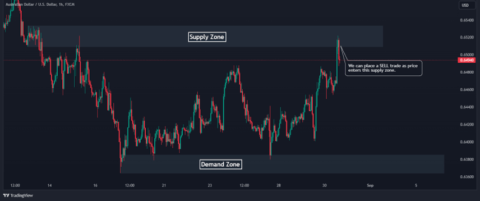In today’s fast-paced world, people are constantly seeking new ways to supplement their income without committing to a full-time side job. For many, short-term trading has emerged as a promising opportunity to earn extra money while maintaining flexibility in their daily lives. But is it truly a viable side income option, and how can someone get started?
Short-term trading involves buying and selling assets over a short period—ranging from a few minutes to a few days—with the goal of capitalizing on small price movements. What was once a practice reserved for Wall Street professionals is now accessible to anyone with an internet connection, thanks to modern trading platforms. But how realistic is it for the average person to use short-term trading as a side hustle? Let’s explore how this strategy can be leveraged to create a new income stream.
Why Short-Term Trading is an Attractive Side Income
When we think of side income, we typically envision freelance work, driving for a rideshare company, or selling products online. While these options can be effective, they often require significant time and effort. Short-term trading, on the other hand, offers a different kind of opportunity: one that is flexible, scalable, and doesn’t necessarily require you to be on the clock for long hours.
Here’s why short-term trading has the potential to become a reliable side income:
- Flexibility: One of the most appealing aspects of short-term trading is its flexibility. You don’t need to trade during specific hours, and you can tailor your trading activity to fit your schedule. Whether you have 15 minutes in the morning or an hour in the evening, you can execute trades during market hours or even in after-hours markets, depending on the asset you’re trading.
- Low Barriers to Entry: With the rise of user-friendly trading platforms, it’s easier than ever to get started with short-term trading. You don’t need a massive amount of capital to begin, and many platforms allow you to start with as little as a few hundred dollars. Plus, most of these platforms provide educational resources that can help you learn the ropes without needing a financial background.
- Scalability: Unlike traditional side gigs where your income is tied to the number of hours you work, short-term trading allows you to scale your efforts. As you gain experience and confidence, you can increase your trading volume or diversify into other assets like crypto, forex, or commodities to grow your side income.
- Quick Results: Short-term trading offers the potential for faster returns compared to long-term investments. Since you’re buying and selling assets within a short timeframe, you can see profits quickly—sometimes within minutes or hours. This is particularly appealing for those looking for a steady stream of extra cash.
How to Turn Short-Term Trading Into a Side Income
While the opportunity is there, turning short-term trading into a side income requires a strategic approach. Here are a few steps to help you get started:
- Find the Right Platform: Your first step is to choose a reliable trading platform that offers the tools and resources you need. Look for a platform with zero commissions, real-time market data, and easy-to-use charts that will help you make informed decisions. Some platforms also offer demo accounts where you can practice trading without risking real money, which is an excellent way to build confidence.
- Start Small and Set Goals: When it comes to short-term trading, starting small is crucial. Begin with a small amount of capital, and set realistic goals for how much you’d like to earn on a weekly or monthly basis. As you become more experienced and start seeing consistent results, you can gradually increase the amount you invest in each trade.
- Educate Yourself: Before diving into, it’s important to take time to educate yourself about the market and short-term trading strategies. Learn about basic technical indicators, such as moving averages, RSI (Relative Strength Index), and candlestick patterns, which can help you predict market movements. Many platforms provide free educational resources, so take advantage of those to build your knowledge base.
- Manage Your Risk: Short-term trading comes with its risks, but there are ways to manage them effectively. Use stop-loss orders to minimize potential losses, and never invest more than you’re willing to lose. Setting a clear risk-to-reward ratio for each trade will help ensure that your wins outweigh your losses in the long run.
- Stay Consistent: Like any side hustle, consistency is key. Set aside dedicated time each week to review your trades, assess your performance, and stay informed about the markets. This doesn’t mean you need to spend hours each day in front of a screen, but regular attention will help you fine-tune your strategy and improve over time.
Can Short-Term Trading Truly Be a Reliable Side Income?
The potential for short-term trading as a side income is real, but it’s important to approach it with the right mindset. While it won’t provide guaranteed earnings, it offers a flexible, scalable opportunity to generate extra money. If you’re willing to learn, stay disciplined, and manage your risks, short-term trading can serve as a powerful tool in your income-building strategy.
For many, the idea of earning extra income without having to commit to a traditional part-time job or business venture is appealing. Short-term trading offers exactly that—a way to tap into financial markets and potentially grow your wealth without needing a huge upfront investment or specialized knowledge. With the right approach and mindset, it could become a viable and rewarding side income opportunity.

Daniel J. Morgan is the founder of Invidiata Magazine, a premier publication showcasing luxury living, arts, and culture. With a passion for excellence, Daniel has established the magazine as a beacon of sophistication and refinement, captivating discerning audiences worldwide.





